Published: June 17, 2021
Summer heat will most likely dominate western and northern parts of the United States through September, according to an updated outlook from The Weather Company, an IBM Business.
An expansive area from the Great Lakes to the Plains and Northwest is expected to see temperatures that are the most above average from July through September.
Meanwhile, areas from Texas to the Deep South will still see summer heat, but overall, it may be less hot than average.
Stay Safe In The Sun With These Top-Rated Sunscreens (SPONSORED)
Keep in mind this outlook is an overall three-month trend. Therefore, we will likely see periods that are hotter or cooler in each respective region of the country when compared to what is shown.
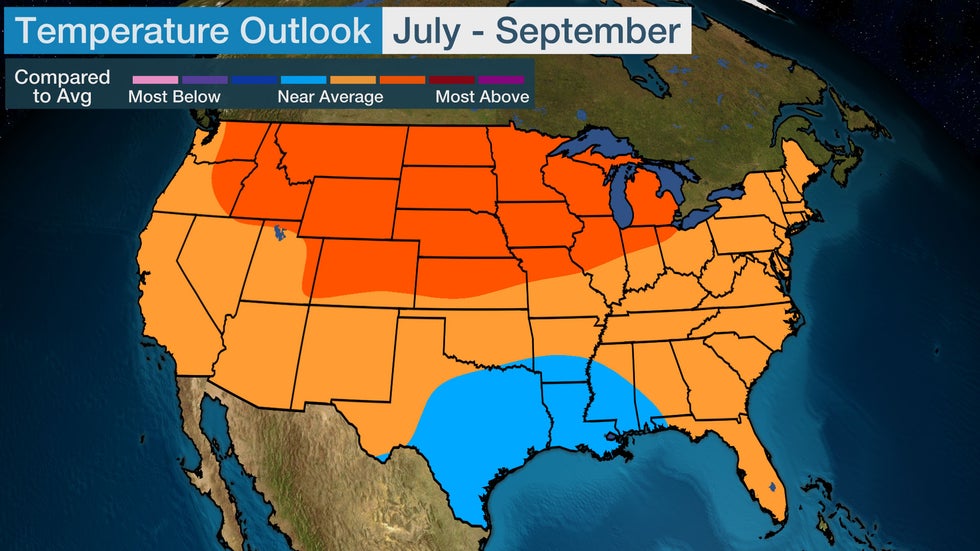
A number of factors appear poised to influence summer temperatures.
One of those is last winter's La Niña. This periodic cooling of water near the equator in the eastern Pacific Ocean has since waned.
However, since the mid-20th century, summers after a La Niña winter tend to be hot across the West and northern tier of the U.S., while generally keeping their cool in parts of the South, according to Todd Crawford, chief meteorologist with The Weather Company.
Another factor is the expansive drought over the West, extending into the Northern Plains and upper Midwest.
Dry soil heats up faster than moist because more of the sun's energy goes into heating the ground and air above it, instead of drawing moisture out of the soil and vegetation. Thus, the odds of a hotter summer are increased in these drought areas.
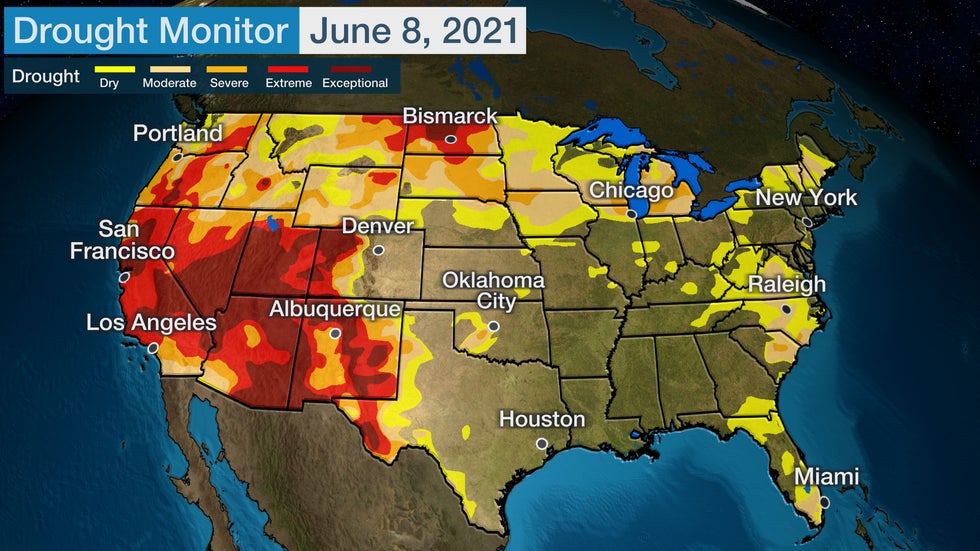 The latest drought status, as indicated by the Drought Monitor analysis as of June 8, 2021. Areas in the worst drought are shown by the darkest red contours.
The latest drought status, as indicated by the Drought Monitor analysis as of June 8, 2021. Areas in the worst drought are shown by the darkest red contours.On the other end of the spectrum, parts of Texas and Louisiana had one of their wettest springs on record. That lingering soaked soil could keep heat under control, relatively speaking, in that part of the South at least into July.
Below is a month-by-month breakdown of the summer forecast.
July
A hotter-than-usual July is most likely from the northern Rockies into the northern Plains and upper Midwest.
However, much of the West, central Plains and Great Lakes should trend generally warmer than average in July.
Much of the East should be near average or slightly warmer in July, while most of central and eastern Texas, Louisiana, southern Arkansas, Mississippi and possibly southern Alabama may see a slightly cooler than typical July.
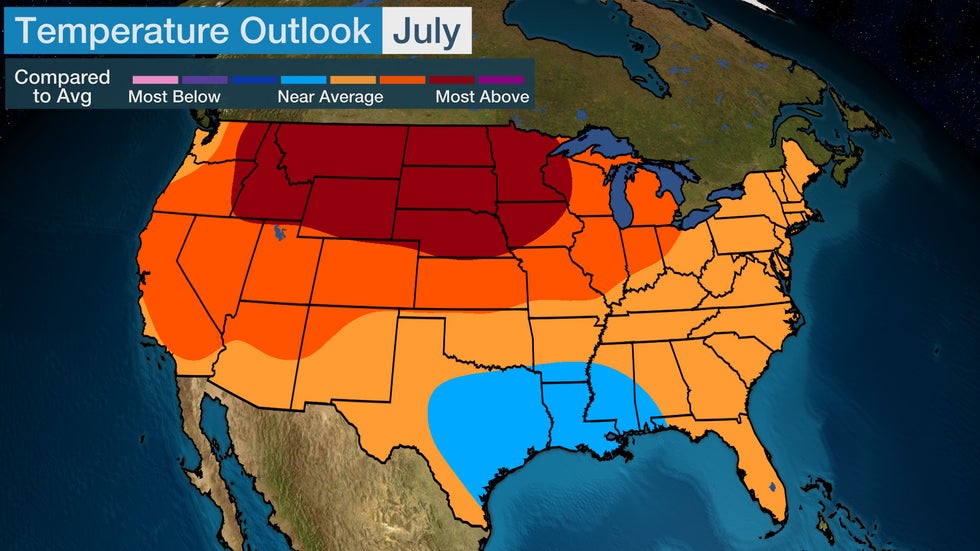
August
Parts of the Northwest, Great Lakes and Northeast are most likely to see a hotter than average August.
While August is typically the hottest month of the year from much of Texas into the lower Mississippi Valley, this August might not be as hot as that sweltering norm.
Much of the rest of the Lower 48 is expected to be near average or slightly hotter in August.
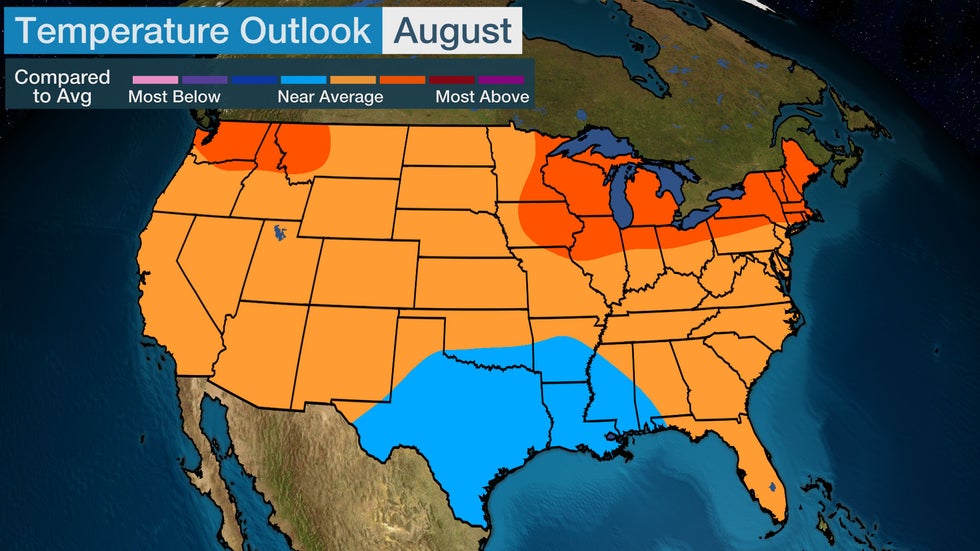
September
Summer will wrap up much like July and August.
The northern Plains and upper Midwest have the best chance of a hotter-than-usual September.
Much of the East and West is expected to be near average or somewhat warmer.
Areas from Texas into the Deep South may see somewhat muted September heat this year.
One wild card in any South summer temperature outlook is tropical storms and hurricanes. The more that impact a region, the more rain could dampen soil and, per the point made earlier, help keep summer heat under control.
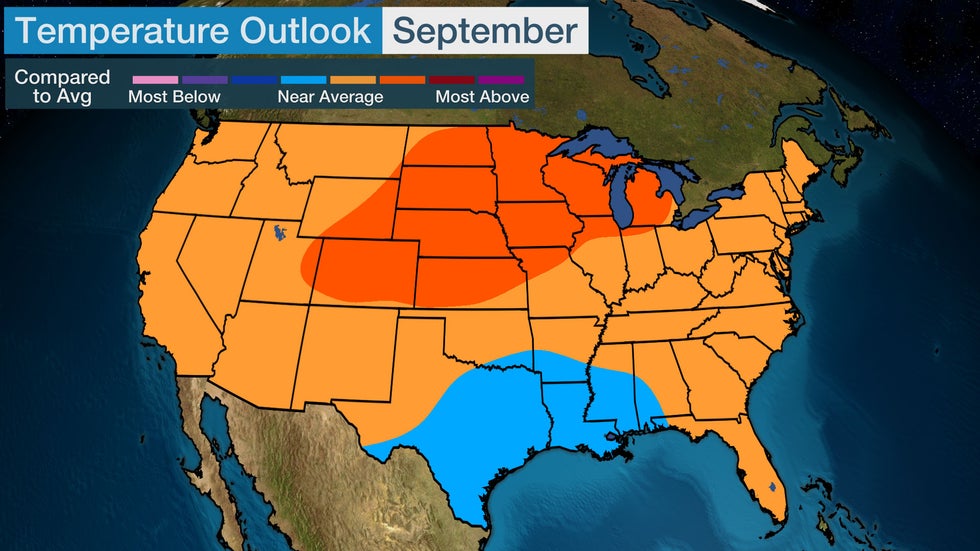
Hurricane Season Update
The 2021 Atlantic hurricane season is still expected to be active, according to an updated outlook from The Weather Company, an IBM Business.
We expect 18 named storms, seven of which will become hurricanes and three that will attain at least Category 3 intensity in the 2021 season. That's more than the latest 30-year average for named storms, but average for numbers of hurricanes and stronger hurricanes.
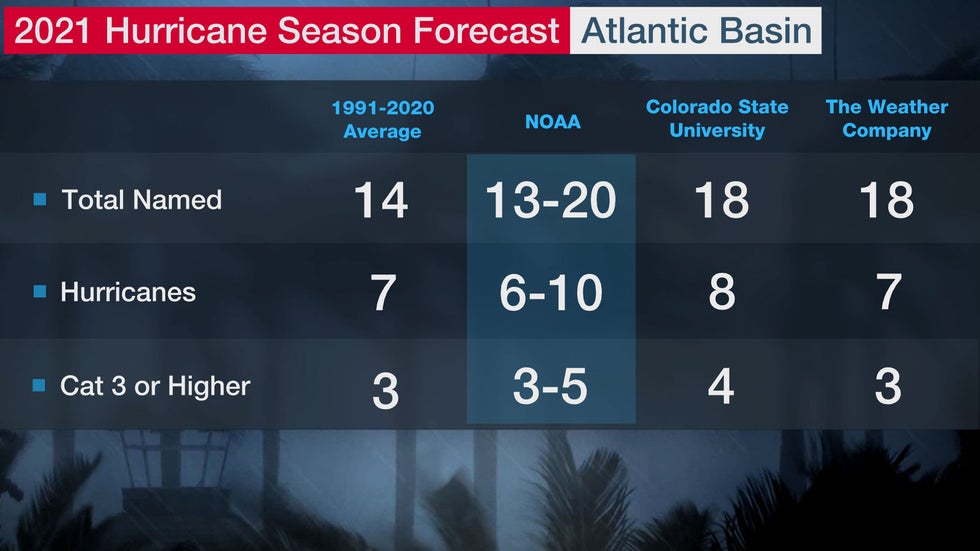
There are several factors in play suggesting another active season is ahead.
Namely, El Niño is very unlikely to develop during the season. When a stronger El Niño is in play, shearing winds are stronger over the tropics, and they tend to inhibit or even rip apart developing or active tropical storms or hurricanes.
Secondly, the large-scale pattern of rising air over Africa and the Indian Ocean forecast by long-range computer models is typically seen in active hurricane seasons, according to Crawford.
However, current ocean temperature trends offer one reason to temper expectations of another off-the-chart season like last year.
Crawford noted sea-surface temperatures have cooled since mid-May from off the west African coast across the tropical Atlantic Ocean to the Caribbean Sea, Bahamas and Gulf of Mexico. As of the time this article was written, ocean temperatures were slightly cooler than average for mid-June between the Lesser Antilles and Africa.
"The one-liner for the season is 'reasonably active, but a sharp decline relative to last year,'" Crawford said.
Keep in mind that despite these seasonal outlooks with numbers of tropical storms and hurricanes, it only takes one destructive storm to make it an "active season" where you live. Prepare every hurricane season, regardless of the seasonal outlook.
The Weather Company’s primary journalistic mission is to report on breaking weather news, the environment and the importance of science to our lives. This story does not necessarily represent the position of our parent company, IBM.
The Weather Company’s primary journalistic mission is to report on breaking weather news, the environment and the importance of science to our lives. This story does not necessarily represent the position of our parent company, IBM.

No comments:
Post a Comment